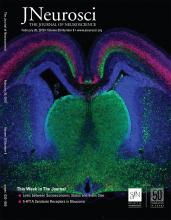- EN - English
- CN - 中文
Ligand and Carbohydrate Engagement (LACE) Assay and Fluorescence Quantification on Murine Neural Tissue
小鼠神经组织中配体和碳水化合物结合(LACE)实验和荧光定量测定
发布: 2021年03月20日第11卷第6期 DOI: 10.21769/BioProtoc.3952 浏览次数: 4666
评审: Alexandros C KokotosMarion HoggAnonymous reviewer(s)
Abstract
The interaction between cell surface heparan sulphate and diffusible ligands such as FGFs is of vital importance for downstream signaling, however, there are few techniques that can be used to investigate this binding event. The ligand and carbohydrate engagement (LACE) assay is a powerful tool which can be used to probe the molecular interaction between heparan sulphate and diffusible ligands and can detect changes in binding that may occur following genetic or pharmacological intervention. In this protocol we describe an FGF17:FGFR1 LACE assay performed on embryonic mouse brain tissue. We also describe the method we have used to quantify changes in fluorescent LACE signal in response to altered HS sulphation.
Keywords: Ligand (配体)Background
Heparan sulphate (HS) is an extracellular matrix and cell surface glycosaminoglycan molecule that is extensively modified by sulphation. HS interacts with a wide range of developmentally important signaling molecules including FGFs, Wnts, BMPs and Slits. During FGF signalling, for example, HS acts as a co-receptor, facilitating the binding of the FGF ligand to the cell surface FGFR receptor. The formation of this FGF:FGFR:HS complex is required for FGF signaling to occur (Allen et al., 2001). Differential sulphation of HS has been shown to affect the binding of FGF ligands to their FGFR cell surface receptors. In our recent paper we used a ligand and carbohydrate engagement (LACE) assay to probe the interaction between HS and FGF proteins (Clegg et al., 2019). This method involves the addition of recombinant FGF and FGFR protein to form the FGF:FGFR:HS complex on tissue sections. The recombinant FGFR can then be labelled using a fluorescently conjugated antibody allowing the visualization of the binding event (Allen et al., 2001; Allen and Rapraeger., 2003).
The LACE assay allows us to observe any change in FGF:FGFR:HS binding caused by altered HS sulphation. For example, in our recent study we were able to show reduced FGF17:FGFR1 binding in embryos lacking 2-O HS sulphation (Clegg et al., 2019). Using image analysis software, we were also able to quantify the change in fluorescent LACE signal, and in this protocol we will detail our robust quantification procedure. In our experiments we have used the LACE assay to analyze the binding of FGF17 and FGF8 to FGFR1 and FGFR3, however, this technique could be adapted to probe the binding properties and HS interaction of a wide range of different ligand and receptor pairs.
Materials and Reagents
Materials
7 ml bijou tubes (Greiner, catalog number: 189170 )
Pipette tips (Greiner, catalog number: 739288 )
1.5 ml microcentrifuge tubes (Greiner, catalog number: 616201 )
Peel-A-Way® Embedding Molds (Square-S22, Polysciences)
SterilinTM Standard 90 mm Petri Dishes (Thermo Fisher, catalog number: 101R20 )
Animals
Mice used in our original study were maintained on a CBA background. Mice used for timed matings were aged between 6 and 24 weeks.
Reagents
Sucrose (Thermo Fisher, catalog number: S25590 )
1× PBS (Thermo Fisher, catalog number: 14190094 )
Tris-HCl (Thermo Fisher, catalog number: 10812846001 )
CaCl2 (Thermo Fisher, catalog number: 10657662 )
Ethanol (Thermo Fisher, catalog number: AC615090010 )
Bovine serum albumin (Merck, catalog number: A1933 )
Paraformaldehyde (Merck, catalog number: 158127 )
OCT embedding matrix (Cellpath, catalog number: KMA-0100-00A )
Sodium borohydride (Merck, catalog number: 452882 )
Glycine (Merck, catalog number: G8898 )
Bovine serum albumin (Merck, catalog number: 05470)
Heparinase I and III blend (Millipore Sigma, catalog number: H3917 )
Recombinant Human FGFR1 beta (IIIc) Fc Chimera Protein (R&D Systems, catalog number: 661-FR-050 )
Recombinant Human/Mouse FGF-8b Protein (R&D Systems, catalog number: 423-F8 )
Recombinant Mouse FGF-17 Protein (R&D Systems, catalog number: 7400-FG )
Anti-Human IgG (Fc specific)-Cy3 antibody (Merck, catalog number: C2571 )
DAPI (Thermo Fisher, catalog number: D1306 )
Vectashield Hardset (Vector Labs, catalog number: H-1400 )
Heparinase Buffer (see Recipes)
Equipment
Pipettes
Dissecting microscope (Euromex, catalog number: DZ1100 )
Cryostat (Leica, catalog number: CM3050 S )
Incubator (37 °C)
Forceps, size 5 (Fine Science Tools, catalog number: 11251-20 )
Microscissors, 5 mm cutting edge (Fine Science Tools, catalog number: 15003-08 )
Scissors, 9 cm (Fine Science Tools, catalog number: 14060-09 )
Super-frost Plus slides (Thermo Fisher, catalog number: J1800AMNZ )
Coplin jar (Millipore Sigma, catalog number: S6016 )
Analog Rocking Platform Shaker (VWR, catalog number: 10127-872 )
Hydrophobic barrier pen (VectorLabs, catalog number: H-4000 )
Humidified chamber/slide staining tray (Heathrow Scientific, catalog number: HS15951A )
Epifluorescence or confocal microscope with image capture software (e.g., Leica AF6000 epifluorescence microscope )
Software
ImageJ/FIJI, version 1.53 (https://imagej.net/Fiji)
Procedure
文章信息
版权信息
© 2021 The Authors; exclusive licensee Bio-protocol LLC.
如何引用
Readers should cite both the Bio-protocol article and the original research article where this protocol was used:
- Clegg, J. M. and Pratt, T. (2021). Ligand and Carbohydrate Engagement (LACE) Assay and Fluorescence Quantification on Murine Neural Tissue. Bio-protocol 11(6): e3952. DOI: 10.21769/BioProtoc.3952.
- Clegg, J. M., Parkin, H. M., Mason, J. O. and Pratt, T. (2019). Heparan sulfate sulfation by Hs2st restricts astroglial precursor somal translocation in developing mouse forebrain by a Non-cell-autonomous mechanism. J Neurosci 39(8): 1386-1404.
分类
神经科学 > 发育
发育生物学 > 细胞信号传导
分子生物学 > 蛋白质
您对这篇实验方法有问题吗?
在此处发布您的问题,我们将邀请本文作者来回答。同时,我们会将您的问题发布到Bio-protocol Exchange,以便寻求社区成员的帮助。
Share
Bluesky
X
Copy link









